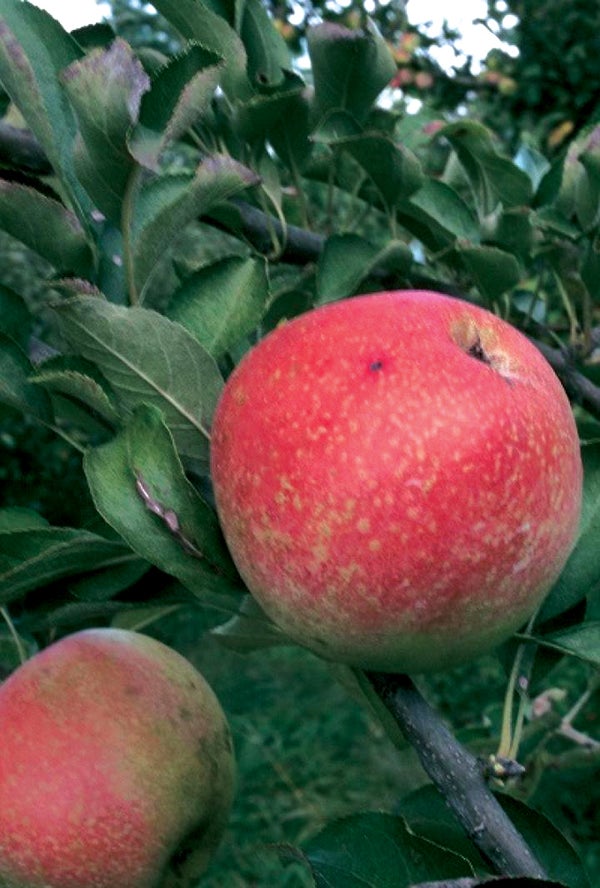How to pick, store, and process apples for winter
Published 4:04 pm Friday, September 25, 2020

- It's apple season – time to pick and store apples for the winter months. There are many ways to keep apples, from freezing and drying them to making apple juice and more apple treats.
|
Getting your Trinity Audio player ready...
|
BY OLD FARMERS ALMANAC
It’s apple season! Find out when apples are ready to be picked, how to properly pick an apple, how to store apples to keep as long as possible, and what to do with a glut of apples — from freezing apples and drying apples to making apple juice and more apple treats.
WHEN AND HOW TO PICK APPLES
There are some clues to look out for when checking if apples are ready to harvest. The skin color will become deeper. Fruits at the sides and top of the tree will usually ripen first because they receive the most sunlight. Finding windfalls on the ground below the tree is a good sign that apples are ready to harvest. If in doubt, pick and taste one!
Never tug an apple from the tree. Instead, cup it in the palm of your hand, lift it up and twist it gently. A ripe apple will come away easily, complete with its stalk. Apples on the same tree will ripen at different rates, so harvest regularly. Handle apples carefully to avoid bruising them, and take care when using a ladder to pick apples from higher up on the tree.
STORING APPLES
Early season varieties don’t store well, so eat them as soon as possible after picking. Mid-season varieties should keep for several weeks, and late season varieties will store for up to six months.
Stored correctly, most varieties of late-season apples should safely keep to the end of the year, and some as long as next spring!
Only store apples with no bruises or blemishes.
Ideally, pick apples in the morning while it’s still cool, and slightly under-ripe so they don’t over-ripen in storage.
Store apples in a dark, well-ventilated, cool but frost-free place, such as a garage or shed. Check your stored apples regularly and remove any that show signs of damage or rotting. Store apples in slatted boxes or racks.
Ideally, stored apples do not touch. They should be on slatted trays or racks or slatted boxes to allow air to circulate. You can also store them wrapped in newspaper. Keep different varieties separate, and eat those that won’t store as long first.
Make sure there is good air circulation, and prevent apples from touching in storage so that if one goes bad it won’t spread to the others. In cooler areas it’s worth insulating boxes with hay, straw or shredded paper over winter.
Large apples are likely to begin to go bad faster than small ones, so eat those first. Check on stored apples regularly and use up or compost any that are going bad. Alternatively, feed them to your garden birds.
PROCESSING APPLES
Fall brings an abundance of juicy apples. But what to do with them all?
FREEZE APPLES
Freeze apples for use in baking, smoothies, jam, jelly and applesauce.
Core and peel your apples. Cut them into slices and coat them in lemon juice to prevent discoloring. One lemon should provide enough juice to treat slices from up to ten apples.
Place your apple slices onto a cookie sheet, then put them into the freezer. Once frozen, transfer them into freezer bags or containers. This prevents the slices from freezing into a single lump. Alternatively, simply freeze them in portion-sized containers.
You can also prepare ready-to-bake apple pie fillings for the freezer.
MAKE APPLE RINGS
Wash and core your apples, and peel them if you wish. Cut them into very thin slices up to a quarter-inch thick, then place them onto oven racks or dehydrator trays so they’re not touching. Set your dehydrator temperature to 135ºF, or set your oven as low as it will go. Your apple rings are ready when they’re dry and leathery to the touch; this takes between six and 12 hours. Or why not dry them further for crispy apple chips?
Once your apple rings have cooled, pack them into airtight bags or containers. Store somewhere cool, dark and dry for up to six months.
MAKE APPLE JUICE
Apples can be juiced without any specialist equipment. Core and chop apples, then place them in a large stewpot. Cover with water, bring to a boil, then place the lid on and simmer on a low heat until the apples turn mushy. Strain through a fine-mesh sieve, working a spoon back and forth over it to extract the juice.
If you wish, filter your juice through cheesecloth or coffee filters to make it less cloudy. Taste and adjust sweetness. Add more water if necessary.
Refrigerate your juice and use it within a week, can hot juice in sterilized jars, or freeze in airtight containers for up to six months.
Or why not try making applesauce, jams, or jellies?
It’s apple season — time to pick and store apples for the winter months. There are many ways to keep apples, from freezing and drying them to making apple juice and more apple treats.


